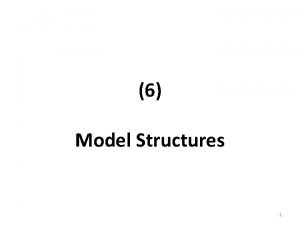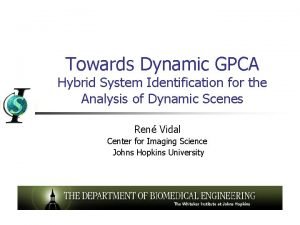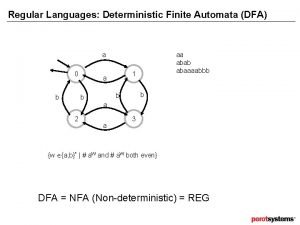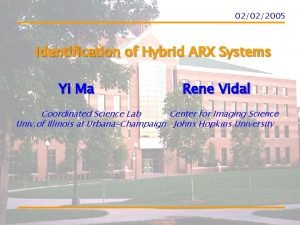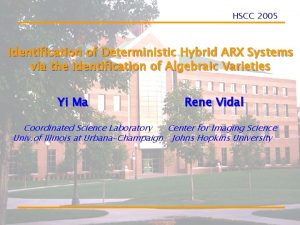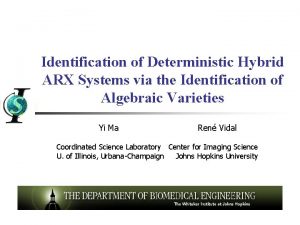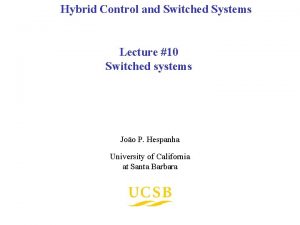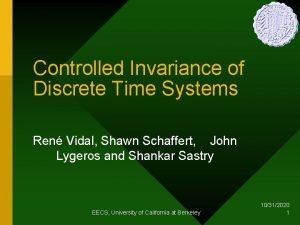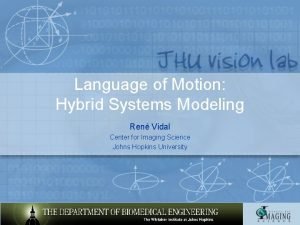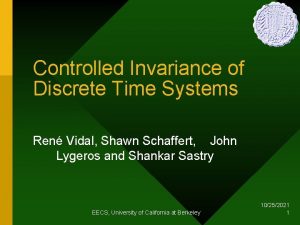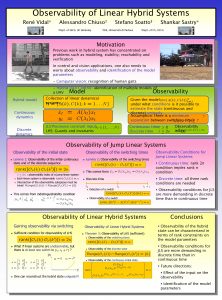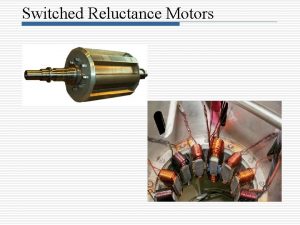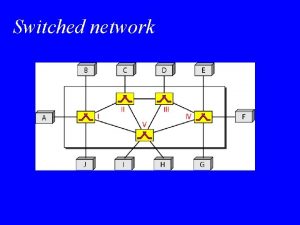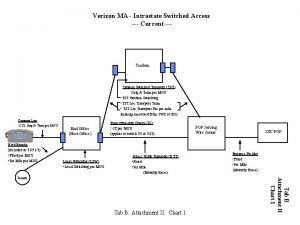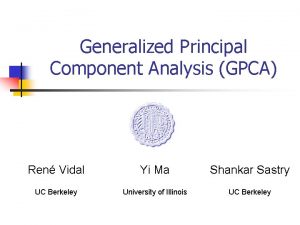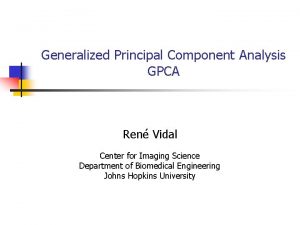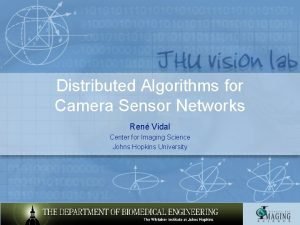Identification of SpatialTemporal Switched ARX Systems Ren Vidal

















- Slides: 17

Identification of Spatial-Temporal Switched ARX Systems René Vidal Center for Imaging Science Johns Hopkins University

Identification of hybrid systems • Given input/output data, identify – Number of discrete states – Model parameters of linear systems – Hybrid state (continuous & discrete) – Switching parameters (partition of state space) • Challenging “chicken-and-egg” problem – Given switching times, estimate model parameters – Given the model parameters, estimate hybrid state – Given all above, estimate switching parameters • Possible solution: iterate – Very sensitive to initialization – Needs a minimum dwell time – Does not use all data

Prior work on hybrid system identification • Piecewise ARX systems – Clustering approach: k-means clustering + regression + classification + iterative refinement: (Ferrari-Trecate et al. ‘ 03) – Bayesian approach: maximum likelihood via expectation maximization algorithm (Juloski et al. ‘ 05) – Mixed integer quadratic programming: (Bemporad et al. ‘ 01) – Greedy/iterative approach: (Bemporad et al. ‘ 03) • Switched ARX systems – Batch algebraic approach: (Vidal et al. ‘ 03 ‘ 04) – Recursive algebraic approach: (Vidal et al. ‘ 04 ‘ 05)

Segmentation problems in dynamic vision • Dynamical vision problems involve – Appearing and disappearing motions – Multiple rigid and non-rigid motions

Spatial-temporal switched ARX models • Model output with mixture of dynamical models exhibiting changes in – Space: multiple motions in a video – Time: appearing and disappearing motions in a video SARX 1 SARXnt SARX 2 • Solve a very complex hybrid system identification problem

Spatial-temporal switched ARX models • The dynamics of each mode are in ARX form – – input/output discrete state order of the ARX models model parameters • Input/output data lives in a hyperplane – I/O data – Model parameters

Recursive ID of ARX models • True model parameters • Equation error identifier • Persistence of excitation:

Recursive ID of STSARX model parameters • In the SARX case input/output data satisfy the hybrid decoupling polynomial • For STARX model, the situation is more complicated due to dependency on spatial location

ID of STSARX model = ID of lifted ARX model • Identification of a STSARX model is equivalent to identification of a single lifted ARX model Embedding Lifting Embedding • Can apply equation error identifier and derive persistence of excitation condition in lifted space

Recursive ID of STSARX model parameters • Equations of the lifted ARX model (hybrid decoupling polynomial) • We wish to minimize the mean prediction error • Normalized gradient descent gives hybrid equation error identifier • When |X|=1 and n=1 we get standard equation error identifier

Recursive ID of STSARX - Convergence • Theorem : For a minimal STSARX If there exists such that where then exponentially

Recursive ID of ARX model parameters: 1/2

Recursive ID of ARX model parameters: 2/2 • Estimation of Spatial Regions • Minimize K-means • Algorithm – Given estimated normals, calculate membership as – Given estimated membership, estimate parameters as – Iterate until membership converges

Spatial temporal video segmentation Video Batch Recursive

Spatial-temporal video segmentation

Spatial-temporal video segmentation

Conclusions • Contributions – A recursive identification algorithm for spatial-temporal switched ARX models of unknown number of modes and order – A persistence of excitation condition on the input/output data that guarantees exponential convergence • Open issues – Persistence of excitation condition on the mode and input sequences only – Extend the model to more general, possibly non-linear hybrid systems
 Advantage and disadvantages of packet switching
Advantage and disadvantages of packet switching What is an minor arc
What is an minor arc Arx model example
Arx model example Acvba.arx
Acvba.arx Daniel von arx
Daniel von arx Central pocket vs plain whorl
Central pocket vs plain whorl Monmon vidal
Monmon vidal Paul vidal de la blache lidera la escuela francesa
Paul vidal de la blache lidera la escuela francesa Maurice vidal portman
Maurice vidal portman Hola amigoa
Hola amigoa Maurice vidal portman
Maurice vidal portman Mychelle espinoza vidal
Mychelle espinoza vidal Glurenor vidal
Glurenor vidal Chanel vidal
Chanel vidal Vidal
Vidal Colegio eliseo vidal
Colegio eliseo vidal Automata
Automata Colopeg vidal
Colopeg vidal


